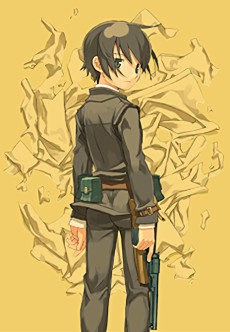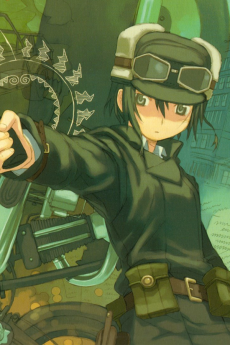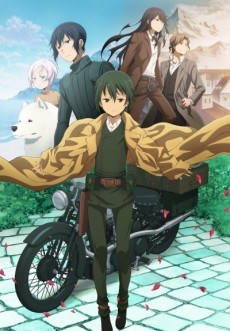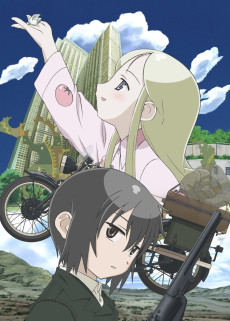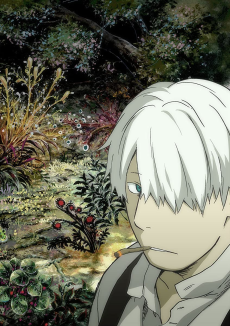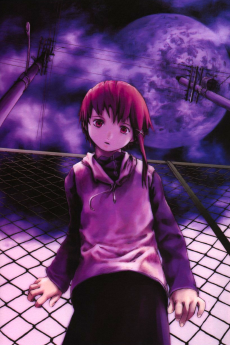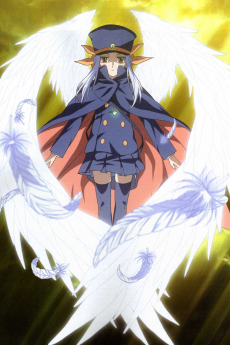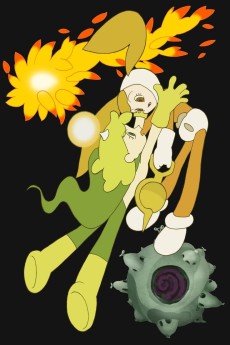KINO NO TABI: THE BEAUTIFUL WORLD
STATUS
COMPLETE
EPISODES
13
RELEASE
July 8, 2003
LENGTH
25 min
DESCRIPTION
Based on a hit light novel series by Keiichi Sigsawa, the philosophical Kino's Journey employs the time-honored motif of the road trip as a vehicle for self-discovery and universal truth. Deeply meditative and cooler than zero, the series follows the existential adventures of the apt marksman Kino along with talking motorcycle Hermes as they travel the world and learn much about themselves in the process. Imaginative, thought-provoking, and sometimes disturbing, Kino's journey is documented in an episodic style with an emphasis on atmosphere rather than action or plot, though still prevalent.
CAST
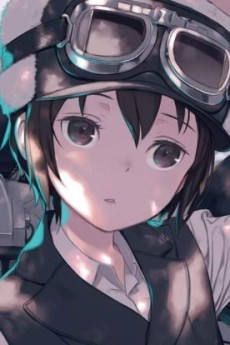
Kino

Ai Maeda
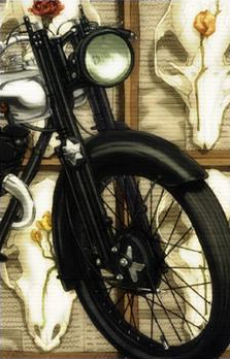
Hermes

Ryuuji Aigase
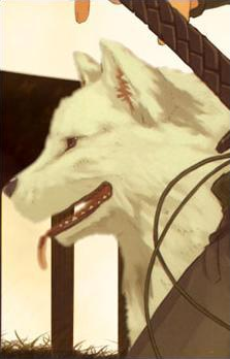
Riku

Houchuu Ootsuka
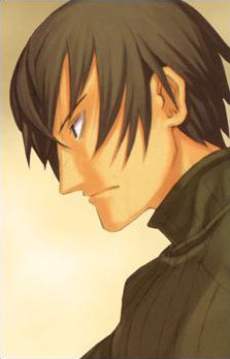
Shizu

Takashi Irie

Kino

Kazuhiko Inoue

Sakura

Aoi Yuuki
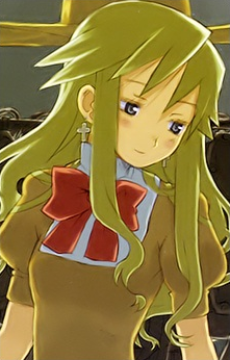
Nimya Tchuhachkova

Ai Kobayashi
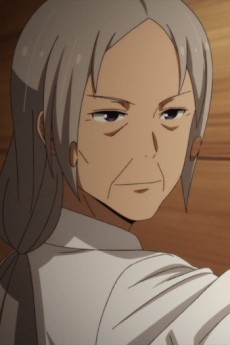
Shishou

Junko Midori

Aibou
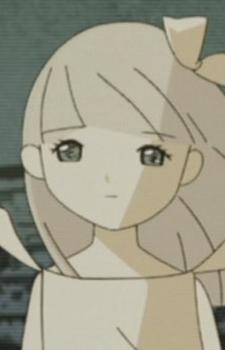
Shijin no Musume

Chiwa Saitou

Yukio
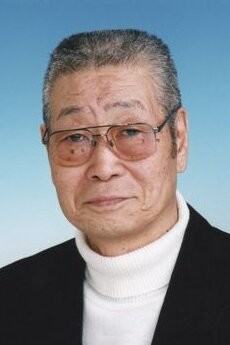
Seizou Katou

Kyoshi

King

Seizou Katou

30 Otoko

Chafuurin

20 Otoko

Keiji Fujiwara

40 Otoko

Takayuki Sugou
EPISODES
Dubbed
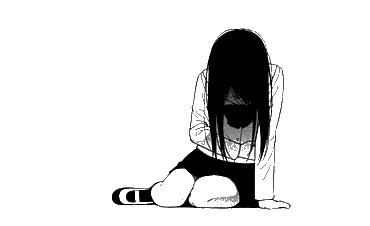
Not available on crunchyroll
RELATED TO KINO NO TABI: THE BEAUTIFUL WORLD
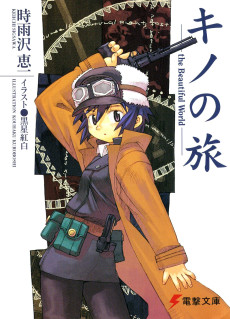 NOVEL AdventureKino no Tabi: the Beautiful World
NOVEL AdventureKino no Tabi: the Beautiful WorldREVIEWS

AndoCommando
85/100Someone once told me that watching the birds made them want to go on a journey.Continue on AniList“Someone once told me that watching the birds made them want to go on a journey.”
What’s more important, the journey or the destination? Usually this type of question requires a level of context to be able to answer properly. Sometimes the journey is nothing more than simple steps required in order to achieve something. Other times it’s the paths you take that leave the most impact overtime. If you were to ask me, I would generally say that the journey holds more weight as the journey is where one is able to grow and learn about themselves and the world around them. The destination, to me is a by-product on one’s journey and what they acquire from it. Because a journey is at its philosophical core a learning experience, one doesn’t even need a clear goal in mind, instead finding comfort and contentment within their own journey. Kino is the sort of person who embraces this kind of lifestyle and solely desires to travel. She is one who sees birds as beings able to traverse the land freely and wishes to follow; to see all parts of the world through the lens of her own eyes; expanding her own knowledge and understanding through discovering new people and cultures along the way as she goes on with her journey.
Kino’s Journey was initially a series of critically acclaimed light novels detailing the journey of Kino, accompanied by Hermes, a talking motorcycle as they travel across a mystical world full of many different countries, each unique in their customs, technology and people. In 2003 an anime adaptation was made by A.C.G.T, a lesser known production company, and contained 13 episodes, almost all containing their own short story where Kino and Hermes travel to a country, learn about the people, values, traditions, as well as what lies underneath, before leaving after no more than three days for fear of settling down. The show is episodic, with barely any linear narrative present, only being concerned with showing glimpses of their journey together and what Kino and Hermes experience with each new setting. The countries Kino travels to are more like their own civilizations, completely cut-off from each other as shown through differences in technology, infrastructure, beliefs, etc. Through this episodic style of storytelling, Kino’s Journey manages to showcase different aspects of society and the human condition in each episode, providing enough ‘food for thought’ to keep viewers intrigued about the different societies and how they came to be. It is a very philosophical show despite never going in-depth with the themes present. However, I see this as a strength in regards to the way Kino’s Journey executes each of its themes.
The main thing to understand when watching Kino’s Journey is that viewers are put in the position of observers alongside Kino and Hermes, who are also merely observing what happens around them with a neutral perspective. At the start of every episode, we are given a fairly rudimentary view at the setting and the people within it, each with their own distinct features and mysterious backstory. From there, our main characters ask questions that aim to bring light to the history of this country and/or citizens that help highlight the themes of each episode before unravelling the underlying reasons why certain things are the way that they are. The themes from these countries include societal elements such as religion, morality, communication, violence, etc. that while exaggerated, do contain a sense of realism to them, making each country seem more like an unnerving dystopia than just a simple place to visit. The way these elements are portrayed are never overly optimistic or pessimistic, instead I believe that Kino’s Journey accurately portrays these universal truths. It’s a presentation choice that can easily turn viewers away from the series, purely being seen as lazy writing if done poorly, but here it is arguably the show’s greatest feat: leaving each story open-ended with minimal explanation allows viewers to immerse themselves in the philosophical concepts presented and freely interpret what the core messages are behind each episode. There’s nothing here that feels forced and is in my eyes a show that respects the audience enough to tell an engaging story enjoyed on the surface, yet provide an abundance of thoughtful discussion for die-hard fans of the series.
The numerous locations Kino’s Journey takes place at are an important part of conveying the themes present in this show, but this show is more than just Kino and Hermes travelling to uncertain worlds in my eyes. To me, Kino’s Journey is primarily concerned about looking at the essentials believed to make up humanity. It’s an anime that, while exposes the dangers societies can face, ultimately aims to find answers to who we are as human beings, the challenges and tribulations which stem from life and the issues that may come as a result. While not every episode involves a new country, it does reveal a new shade of humanity, whether good or bad. The show tells us in the beginning that “The world is not beautiful” and it does not shy away of showing terrible pasts and heinous acts. And with each terrible event it seems as though Kino is always questioning the philosophy behind it all, yet never makes wholly assumptions based off them. Kino, despite how many times she may have seen similar cases of awful deeds, remains sceptical of everything and everyone. And with this trait, numerous questions arise about how circumstances may be flawed, but gives little comments on how these problems could be solved. No matter how dark the show gets, it never overpowers what you’re watching or hinder one’s enjoyment. Alongside the morbid subject matter, Kino’s Journey offers some light-hearted and uplifting events spread across the 13 episodes, balancing out the darker themes present throughout, and gives the show elements of hope. Never before have I seen an anime offer so many dense questions about philosophical, ethical and moral dilemmas associated with human nature so effortlessly, and it made re-watching the series all the more rewarding.
Because Kino’s Journey is episodic, it’s rather difficult for me to be specific about the different themes, questions and messages provided in this show. Because of this, I’ve decided that I’ll go over some of my thoughts for each story and what I interpreted from it. And with respect to Kino’s take on travelling, I shall restrict each part to only a few sentences. Warning: Many spoilers will be here so if you don’t want to know what exactly happens in Kino’s Journey I encourage you to skip this part of the review. With that said, here are my thoughts:
****SPOILERS****
1 – Land of Visible Pain: If human could hear each other’s thoughts, wouldn’t they grow closer? Actually, it caused the opposite; dissension and separation. Peace with all was not achieved when all privacy was lost. No one can completely love everything about someone – there’s always conflict, we are all individuals, after all. But it’s the relationships that can appreciate each other in spite of these conflicts that remain strong through any kind of tribulation.
2 – A Tale of Feeding Off Others: More like a tale of a traveller among wolves in human flesh. These people have committed heinous acts, but if what they said about their families are true, they are still human beings with some sense of morality among them. Yet an experienced traveller like Kino has probably faced situations like this before, and she still chose to help them survive, sacrificing rabbits whose death she acknowledges were in vain. Humans have as much potential to hurt each other as they do to help.
3 – Land of Prophecies: This episode covers four related stories: first a town where the apocalypse is believed to be upon us, followed by a place that wants so desperately to belong they base their culture on it, then we see a land whose unintentional connection to a past town seems concerning, before witnessing the result of this; destruction. The episode focuses heavily of beliefs and religion, specifically the fanatic side of it all. Humanity is gullible, attaching itself to beliefs no matter how incredibly off their interpretation of it all is. Context is everything.
4 – Land of Adults: It’s Kino’s backstory. There’s more to life than this dreary world made up by working adults, and people know that, but they’re afraid of never experiencing everything they could want. And thus, someone decided it would be better if that ambitious mentality was excised out of everyone, but what else was lost. Hell, her own parents tried to murder her for wanting more out of her life. Everyone in that town was just another brick in the wall, and now that Kino has broken away from said wall, she is free to consciously do as she wishes.
5 – Three Men Along the Rails: Kino comes across men who have done their job for decades that oppose one another, essentially making all that work meaningless, and a country that crumbled under an extreme form of democracy. Humans need direction in their lives to keep their lives fulfilling and important, no matter how unnecessary, pointless or pressured. Once this is removed, one ceases to have meaning in one’s life. The fork in the road at the end is interesting, with Kino’s reasoning being if they end up at a place they dislike, they can always backtrack and try the other road.
6 – Coliseum: Kino stops at a country reputed for its beauty, she finds it under rule by a cruel and hedonistic king who subjects all visitors to gladiator-like duels. The end-result, Kino stands tall and kills the king, followed by issuing a new law: First-class citizens can fight until the last one standing is king. This new rule, while cruel on the surface, is actually providing safety to travellers, lower-class citizens; people that don’t wish to fight, and leaves the higher class’ desire for bloodshed to themselves, leaving the consumers of gladiatorial combat to confront the horrors they have subjected onto others for their own amusement.
7 – Land of Wizards: In the Land of Wizards, one’s worth is measured by one’s ability to increase crop production, but here lies one girl who wishes to build a successful flying machine, to the disproval of her townsfolk. However, with perseverance and the help of a traveller and her motorcycle, she achieves her dream. Similar to Land of Adults, the one who strives to reach something beyond what the people around them think. How can one can human without actually living one’s life? Despite the happy ending, the episode showed how steadfast people can be in their old ways of thinking and when witnessing something they do not understand, see it as magic. Weakest episode though.
8 – Land of Books: Arguably the most complex episode. What seems to be a look at the faults of censorship and authoritarianism on the surface delves into the effects of fiction. How one can lose themselves in an illusion, both damaging through escaping all of reality’s ties on you and a place of solitude from the harsh circumstances one is overwhelmed with. If all you could want in the world is in a book with nothing written inside, does that mean the world is nothing? We are the authors of our own lives.
9 – A Tale of Mechanical Dolls: A woman who saw her family die substituted them for her own mechanical creations. She loved them as her own, but the feeling was not mutual, only out of purpose. But when their purpose is lost, what then? Do they look for a new reason to live? Do they have a reason to live? Everyone copes differently and everyone has their own individual purpose to live, even if they aren’t human.
10 – Her Journey: This episode is all about Kino reflecting on the other people she had met on her journey, with most of the focus being around meeting a regarded wise man. But the wise man tells Kino he is not wise, for he wanted to rid himself of self-consciousness, thought to be the root of evil actions, however it also erased many other important qualities that makes someone human. How ironic with how he wasted his life living for nothing, and people thought of him as wise.
11 – A Peaceful Land: A war that lasted hundreds of years is resolved through a game that destroys the lives of countless innocents of a third party. The screams, cries, blood and death goes unnoticed when competition is at this level. But is the third-party as innocent as we think? Aggression only channels further aggression despite the initial look of peace. Ends do not justify the means here. An observation on how barbaric human nature can be, lacking any sense of empathy. Why do humans fight for ultimately nothing?
12 – A Kind Land: Kino travels to a land where travellers are apparently shunned, yet they are extremely welcoming and friendly to her. Her wish to stay longer than 3 days almost caused her death. Kino, no matter how unemotional she may act, is still a human, and cares for others like you would expect a good person would. Kino’s distraught expression as a helpless observer being one of the most powerful moments in the series. It’s a poignant end to the series yet also has a sense of completeness about it, with the choices of the people to die along with their town has this essence of beauty that’s hard to put to words.
****SPOILERS END****
One of the more undervalued parts of Kino’s Journey is how it goes about its characterization. Kino and Hermes are the only two characters the show has, with every other person being a part of their own setting, leaving all the development to our protagonists. Both leads are ambiguous characters in their own rights, however Hermes is a much simpler case being a talking motorcycle with no focus on backstory, acting primarily as the voice of reason throughout the series. Whereas Kino appears as a neutral observer all the time, making few comments on her thoughts about the circumstances present each episode and only getting involved when necessary. She plays her role as a traveller well, merely asking questions to broaden her own understanding and staying out of a country’s own business. While one may see this as Kino not willing to point out issues, I found it wise on her behalf; she knows she is only one person amidst the whole of society and knows that she will not be able to make any massive changes everywhere she goes. As Kino herself says: “Playing God is not my job”. Of course, this does not go as planned all the time, sometimes finding herself participating in each country’s way of life with troubles alongside. In these cases, intervention is inevitable, and even then she never “fixes” these broken parts of society, rather seeming content allowing nature to dictate its future. At the end of every episode, Kino and Hermes converse about what may be considered fun banter at face value but is more akin to understanding how the world functions and the difficulties that come with. Despite how the two may think differently, both realize the world is full of faults. But the faults are what drives human nature into individuals like all of us.
The production values for Kino’s Journey are hit-or-miss for the most part. The animation is very generic with small bursts of life when Kino was forced into action, and the designs are all simplistic with a very lacklustre colour pallete that rids contrast for nearly every location. But I would not say it negatively impacted my viewing as it matched the relaxing vibe the show has, never requiring amazing visuals to keep me interested. And personally, I like the art style used here; early 2000’s similar to Fullmetal Alchemist ’03 and Wolf’s Rain. As for audio, it only helped enhance the viewing experience. The music was very ambient with both the opening and ending themes always being a pleasure to listen to. The English dub was done by Sentai Filmworks and they did a solid job in my opinion despite the lofty disproval of the dub by many fans of the series. Kelli Collins voicing Kino was the highlight of the dub, giving the young woman a sense of maturity all the time, whereas Cynthia Martinez voicing Hermes came off as cartoonish who I could definitely see irritating some viewers. Overall I don’t think it hinders the overall quality, but the subbed version is better; characters sound better, emotions are better expressed, there’s more insightful commentary for each episode, if you want the better version, go with the subbed.
In conclusion, the 13 episodes that make up Kino’s Journey tell stories of human interaction in different scenarios, each providing its own aspect and perspective on humanity and the world we live in. It’s rare to come across an anime that is so thought-provoking from a seemingly simplistic setup and presentation every episode, and while episodes will vary in their immersion and interpretations, each story shows a different side of philosophy that will keep you intrigued the more you think about it. Kino’s Journey, despite how neutral the show portrays its themes, comes off as one of the most human anime I’ve ever seen. It has no problem showing off all of humanity’s flaws, because that is half of the message underneath it all. We as complex human beings all have a mix of good and bad qualities, but rather than belittle all the negative parts, Kino’s Journey aims to show that all these aspects make up who we are and the world around us.
“The world is not beautiful. And that, in a way, lends it a sort of beauty.”

Rezto
97/100“The world is not beautiful; and that, in a way, lends it a sort of beauty.”Continue on AniListKino’s Journey (Kino no Tabi) is a masterful collection of short stories which ingeniously explore the thought-provoking, socio-political issues faced by independent countries with distinctive cultures. Whether the country is big or small, rich or poor, authoritarian or libertarian; nothing is off the table – allowing for the multitude of countries’ philosophical underpinnings to be construed to their fullest potential by the audience, whilst also having their true purposes left deliberately ambiguous by the creators, so to allow for the audience to interpret the moral messages in a meaningful way.
These stories are told through the eyes of the observant, young, androgynous female traveller, Kino – the protagonist – who appears to take a rather laissez-faire stance towards the struggles of the people in the majority of countries she embarks. Hence, Kino is a character almost entirely lacking any desire to change the world around her. Although this may normally be portrayed as negative, and can be a little bit frustrating, here, this only helps to heighten the audience’s appreciation of the show, as it allows us to self-insert and breathe in the magnificence of the beautiful world. Furthermore, this also serves to let the stories of these countries play out naturally; as Kino usually has little, if nil, influence over the story as a whole. However, when necessary, Kino’s quick-wit and impressive marksmanship allow her to take any necessary action against threats that seek to cut her journey short, be it for the best or worst. On the other hand, Hermes – Kino’s trusted motorrad (a motorbike) and sidekick – often aids to lighten the show’s sinister tone through his rather humorous misunderstanding of common human phrases, whilst also furthering our understanding of the different countries in his own, subtle, quirky way.
Kino and Hermes’ relationship is a tragic telling of selfish loneliness. Upon Kino’s meeting with Hermes, we are starkly informed of their means for unification; “I’ll give him balance, and he will give me speed.” We realise that the two cannot function without one another, which strikingly illustrates the profound sense of travel that the two crave, as Kino is willing to risk her life to journey with a single companion, who is simply glad to be ridden. Although Kino is happy, it is hard to feel that way for her, as her hidden isolation makes us question the critical choices she has made in her life.
What is arguably most interesting about the show is its sluggish pace, which contrasts with the ruthless sins juxtaposed on screen. Even though there is plenty of gunfire, the show manages to hold true to itself and avoid plunging through the gaping hole into pure action. There are a few episodes, which I believe are worse than the rest, that rely too heavily on action to push their messages, but are so few and far between, that they do not steal from the show’s overall enjoyment at all.
Due to the nature of the show, the unpleasantness of many countries and the various aspects of the human condition, with all of its flaws, is hyperbolised to such an extent that it may feel as if the show is enforcing some sort of biased message on the audience – even though this is not the case. This may be a concern for a few, but I thought that the borderline amusing, yet tragic exaggeration worked incredibly well, as it helped to bring the show’s obscure messages to the forefront.
It must be noted that what will become apparent early on to newcomers is the show’s fairly odd art style. The show is from 2003, which, subsequently, makes it a little bit outdated for today’s standards. The character designs are all very simplistic, the scenery is drab and there is a lack of fluidity in animation. However, this is still an incredibly charming and pleasant experience, which cannot be found elsewhere easily. The art style is consistent and never strays away from what has been established. Furthermore, the use of the interlaced video effect gives the show a coat of distinctiveness that I have yet to see used as effectively elsewhere. Despite this, it can be hard to convince people who only watch new, mainstream anime to watch an old show or one with a unique art style, as it is not the same as what they are used to. If you happen to be one of these people, please do not be turned off by this show’s individuality. You will definitely get used to it, and you will regret dropping it over something so petty.
Similarly, whilst we are on the topic of the show’s production quality, the sound design – although not particularly impressive – helps to maintain the show’s seriousness and maturity. The voice acting, especially for Kino and Hermes, is solid. None of the characters’ voices come off as unrealistic, which retains the show’s down to earth atmosphere. The background music is practically non-existent, yet this is not a negative. Throughout the whole show, the absence of music actually meant that there was not one situation in which it felt like music was missing. This, subsequently, meant that when the sparingly used music was utilised, it ended up having the clever effect of locking the audience’s attention towards certain key scenes, highlighting their importance.
To conclude, regardless of some of Kino’s Journey’s downsides, it has been made clear that this well-written and important show is deserving of your time and thought. The show does not shy away from dark themes – with the insincerity and ignorance of man constantly leading to abhorrent suffering being just one reoccurring theme. However, at the heart of all this agony is a definitive road of hope. Despite the dangers, we are encouraged to begin our own journey, to take to the sky and fly with the birds. As we peak into the livelihoods of those who miraculously live, we cannot help but feel enlightened in humanities’ duality.
“The world is not beautiful. Therefore it is.”

Tomatt
80/100The oddly captivating dark journey of Kino and her motorroad.Continue on AniListKino and Hermes, a human and a motorroad, are the two characters we follow through this journey exploring or rather experiencing the different countries and landscapes. Another way to put it is they are experiencing every country's weird and inhuman yet human cultures and ideologies accompanied with a mysterious yet oddly compelling dark atmosphere and tone.
{Characters}
Even though the supporitng cast changes each episode, the various characters that are introduced make strong impact on the viewer to remember them. Then we have the two protagonists Kino&Hermes, Kino is a young woman who travels across the land to visit as many countries and cultures as she can. She is portayed as a mysterious personality throughout the series, only staying 3 days to each country, practicing with her gun before dawn every morning and most importantly most of the time not interfering with the country's customs and ideals. As a traveler she is stoic and calm, as a person she is accepting and curious that's what makes her an interesting and mysterious person and that's what makes this series tone&atmosphere. But without her buddy Hermes this wouldn't be possible, as a talking motorroad who lacks human common sense he has a very curious yet carefree personality that completes the duo's chemistry as travelling buddies and as good friends.{Visuals & Direction}
Aesthetically the series has a dark pallete almost like a old tv that compliments its tone and atmosphere, the designs are simple yet they show you the personality of the person and the backrounds have a dark pallete yet they draw you in with their beautiful&simple structure. But what makes this series shine is its direction which elevates the previous stated aspects of the show. Creative and ambitious, simple yet complicated is the series strongest point and what make it a cinematically pleasing experience.{Music & Sound Design}
The music is mostly absent and it plays in certain moments but when it plays it makes an impact through its very weird dark rhythm. Despite the music's absence, the series feels oddly alive due to the use of natural sounds and multiple disturbing sound effects. By letting the natural sounds in the backround they create a calming tone and with the addition of disturbing sound effects they destroy that calm and create an uneasy yet dark calm tone to the series that make it so special.In conclusion, Kino's Journey is filled with various dark stories&thematics, an oddly captivating atmosphere, a phenomenal cinematic experience and distinct yet human characters that make for a very special journey across the land along with Kino and her motorroad.
SIMILAR ANIMES YOU MAY LIKE
 ANIME AdventureGinga Tetsudou 999
ANIME AdventureGinga Tetsudou 999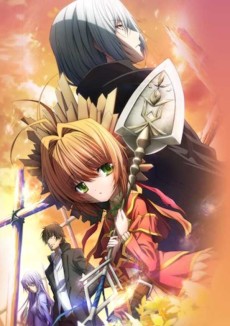 ANIME AdventureKamisama no Inai Nichiyoubi
ANIME AdventureKamisama no Inai Nichiyoubi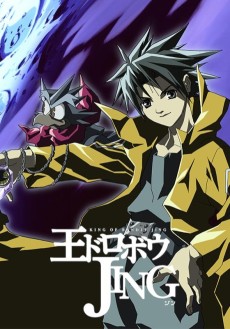 ANIME AdventureOu Dorobou JING
ANIME AdventureOu Dorobou JING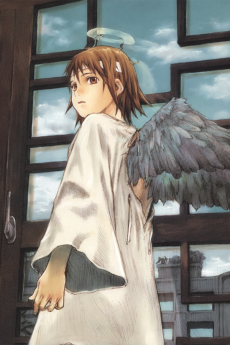 ANIME DramaHaibane Renmei
ANIME DramaHaibane Renmei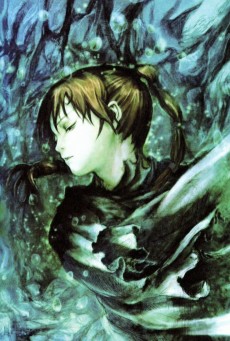 ANIME ActionTEXHNOLYZE
ANIME ActionTEXHNOLYZE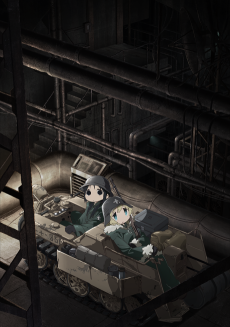 ANIME AdventureShoujo Shuumatsu Ryokou
ANIME AdventureShoujo Shuumatsu Ryokou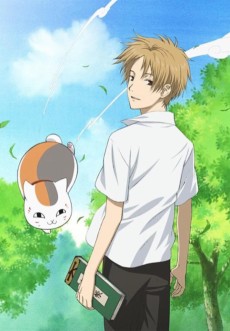 ANIME DramaNatsume Yuujinchou
ANIME DramaNatsume Yuujinchou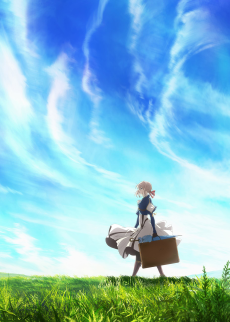 ANIME DramaViolet Evergarden
ANIME DramaViolet Evergarden
SCORE
- (4.05/5)
MORE INFO
Ended inJuly 8, 2003
Main Studio A.C.G.T.
Trending Level 2
Favorited by 3,095 Users

